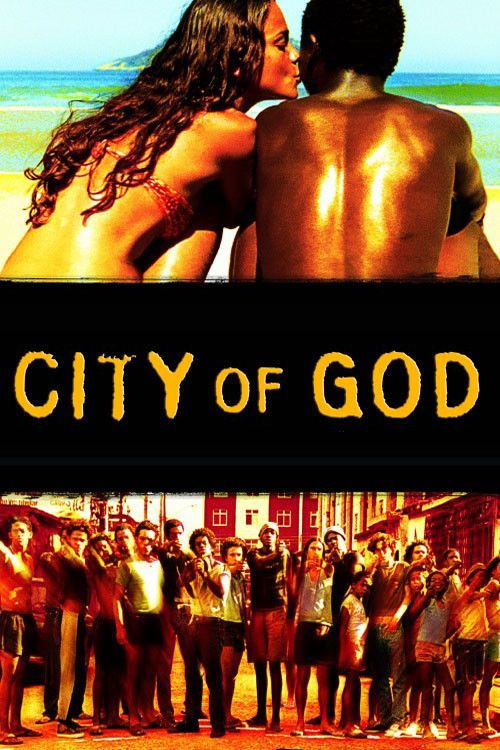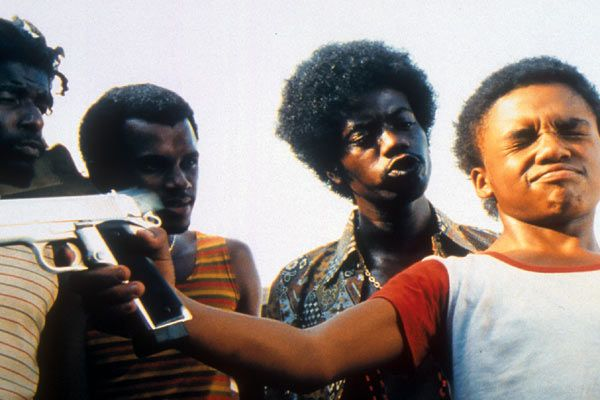Ciudad de Dios. (2002).


Greetings, film lovers.
Living in Boa Vista, Roraima, I became interested in Brazilian cinema and, when looking for something to watch, I decided on the iconic film City of God (Cidade de Deus). I was able to watch it from the comfort of my apartment, and the experience was powerful. The film impressed me with its semiotics and the realism with which it portrays life in the favela of the same name, located in the western part of Rio de Janeiro.
From the very beginning, I feel the harshness of an environment where football is intertwined with violence and death. Human misery is an everyday occurrence, and hope seems to be absent in a scenario of constant war between children and teenagers, as shown in the film.
Released in 2002, the film was directed by Fernando Meirelles and Kátia Lund, with a screenplay by Bráulio Mantovani based on the novel by Paulo Lins, who grew up in the favela where the story takes place.
The title, City of God, creates a brutal contrast: the name evokes a sacred and heavenly place, but the film shows the opposite, a hell on earth where violence, crime and hopelessness are the norm. This film captivated me because it is a vivid reflection of the social reality of Rio de Janeiro, where violence and drugs take over every corner.

I was captivated by seeing it in Portuguese, and I found it fascinating that the actors seemed to come from the favela itself. Their authenticity gives the film a special touch, very different from what you see with actors from theatre schools.
The semiotics in City of God are rich and complex, and are manifested in the way images, sounds, dialogue, editing and the setting of the favela itself are combined. For me, the film achieves such a raw construction of reality that it completely immerses you in the lives of its characters. Semiotics are mainly addressed through three elements: violence, identity and urban space.
Violence as a sign of identity and social control. Violence in the film is not just an action, but a language, a sign of power and status. Weapons, shootings, and murders are symbols of the struggle for control and survival. The film presents violence as something everyday, almost normal. Seeing children getting involved in crime at a very young age and death as part of everyday life is a brutal representation of social decay.
The favela as a labyrinth with no way out. The film conveys a feeling of suffocation, of the characters being trapped in a cycle of violence from which it is almost impossible to escape. The opening scene of the chicken running away but ultimately being caught can be interpreted as a sign of this endless cycle and the difficulty of finding a way out. In this sense, the film's semiotics highlight the dehumanisation and struggle for survival in Brazil's urban peripheries.
The realism of the set design and atmosphere. The film was shot on location in the favelas of Rio de Janeiro to capture the essence of life in these neighbourhoods. The directors, Fernando Meirelles and Kátia Lund, wanted the settings to be another character in the story, reflecting social deterioration over time. To achieve this authenticity, many of the actors were non-professionals who lived in the favelas themselves, which contributed to a faithful representation of the context.
The role of costumes, make-up and music. The costumes show the social evolution of the favela. The clothes imitate Rio's street fashion trends, and gang members are distinguished by their clothing, which reflects their adaptation to an environment of heat and constant conflict.
Music, meanwhile, is fundamental. The soundtrack encompasses genres such as samba, which connects with cultural roots, and bossa nova, which provides historical context. In addition, an original score is used that mixes traditional percussion with electronic rhythms to generate a sense of chaos and tension, which characterises the most dramatic moments.The colour palette and its narrative. The colour palette is one of the film's most powerful tools for narrating the passage of time and social degradation. The film evolves from warm tones (yellows, browns and oranges) in the early scenes, which evoke a sense of innocence and community, to cold, desaturated tones (blues, greys) at the climax, reflecting hopelessness and a lack of future. Each change in tone is a visual cue that intensifies the viewer's emotions and signals the worsening social and moral situation in the favela.
The acting: an exceptional achievement.
One of the film's greatest successes was its use of non-professional actors, many of whom lived in the favelas. Their lack of previous experience gave them a striking naturalness. Their reactions and dialogue feel genuine, as many were portraying realities they knew first-hand. The improvisation in many scenes gave the film a unique dynamism and energy.

City of God transcends the boundaries of traditional cinema, offering a raw and moving window into a reality that it manages to capture with impressive creativity.
To conclude the narrative of this piece, City of God is a masterpiece of Brazilian cinema that has left an indelible mark on the history of world cinema. Through a raw and uncompromising narrative, the film immerses me in the complex reality of the favelas of Rio de Janeiro, exploring themes such as violence, poverty and the struggle for survival.

The film stands out for its authenticity, achieved through the use of real locations, the participation of non-professional actors and a script based on real events. The film's semiotics, visible in the colour palette, music and depiction of violence, enrich the narrative and allow for a profound reflection on dehumanisation and the cycle of crime.
The development of film production in the favela is a monumental creative event in Brazil.
The film made me reflect on my own experience in Boa Vista and led me to ask myself:
What is a favela really? How does it differ from neighbourhoods in other Latin American countries? It is a work that not only entertains, but also leaves me thinking, analysing social reality with a more critical and empathetic eye.
Grateful for being and living in the favela of God.



Language: Post written in Spanish and then translated into English through DeepL|| Idioma: Post escrito en español y traducido al inglés con la ayuda de DeepL
The links are taken from sensa cinemas.
https://x.com/jewellery_all/status/1959348706546970937
Thank you, dear hiver, @tahirmuneer, for your assessment.😃
https://x.com/lee19389/status/1959366138464534692
#hive #posh
Different films have different stories and we learn a lot from them. I will definitely watch what you have shared with us.